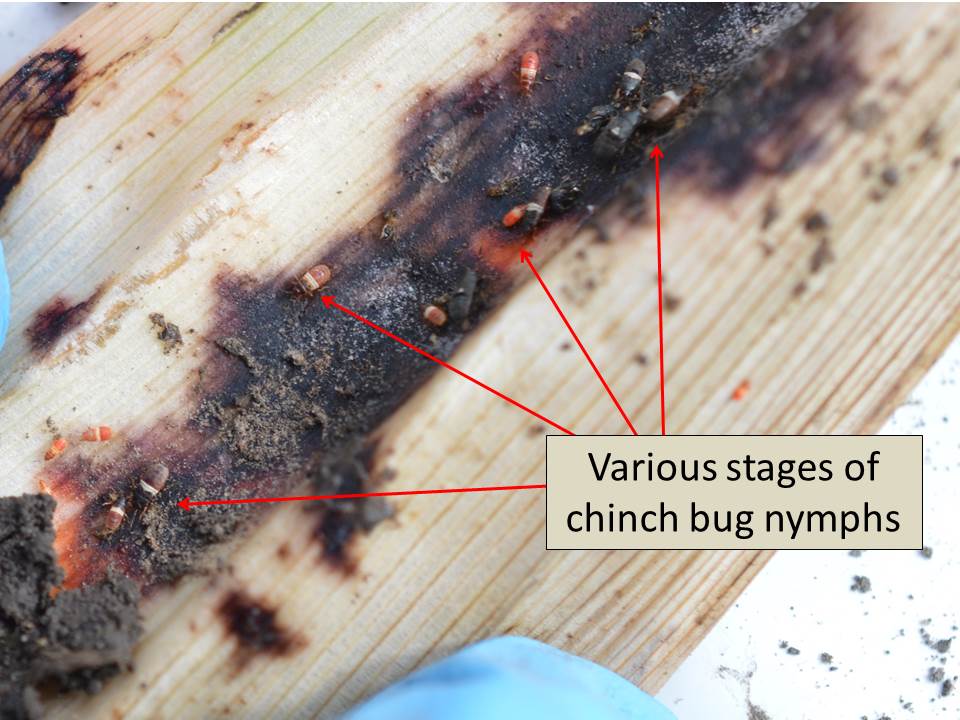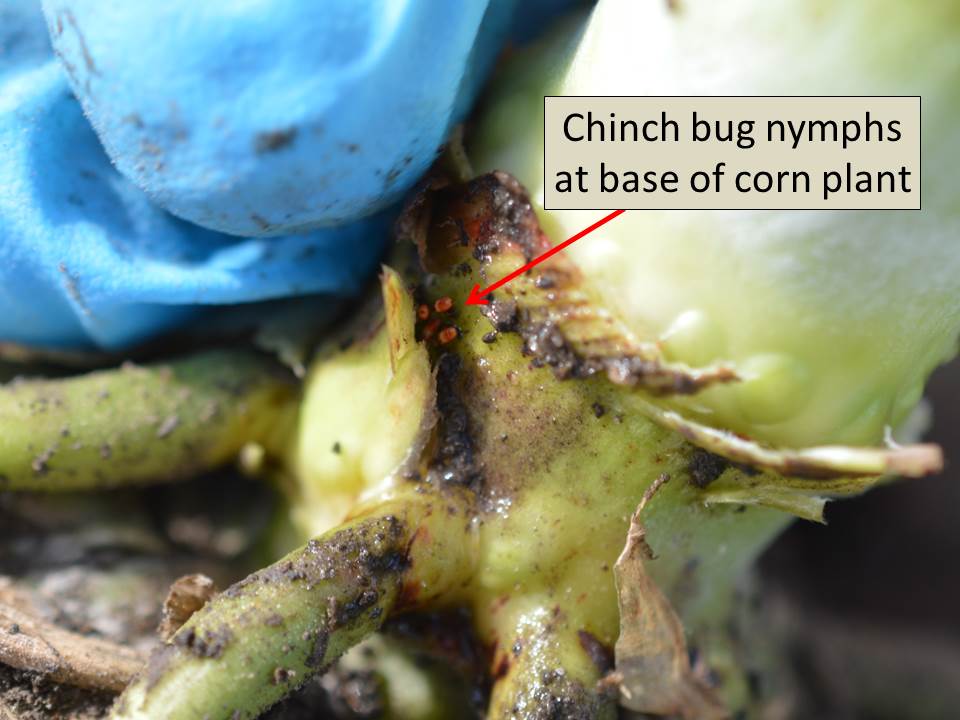–by Dr. Jeff Whitworth and Dr. Holly Schwarting
Chinch bugs are numerous and very active throughout north central Kansas, and have been for at least the last month. The overwintering adults deposited eggs in wheat and oats, as far as our agricultural crops are concerned, and apparently the overwintering survival was relatively high because there have been huge numbers of chinch bugs migrating from these two crops. Fortunately, most of the corn and sorghum have developed enough to be able to withstand relatively large numbers of chinch bugs as they suck plant nutrients. Chinch bug populations sampled this past week consisted of 90% nymphs (both the very small reddish orange and larger gray nymphs, both of which have a transverse white stripe).
These nymphs, for the most part, are around the base of the plants feeding behind the leaf sheaths. These bugs will feed and develop for approximately another couple of weeks, then mature into adults. Mating and oviposition then will start another generation of chinch bugs that will continue to feed in corn and/or sorghum fields. With good growing conditions, most of this feeding will go unnoticed and have little effect on yield. However, if growing conditions deteriorate but bugs continue feeding, they can cause stalk lodging, which makes harvesting much more difficult. Spraying for chinch bugs at this stage of crop development is usually not effective as most bugs are relatively inaccessible to insecticides at ground level behind leaf sheaths.

